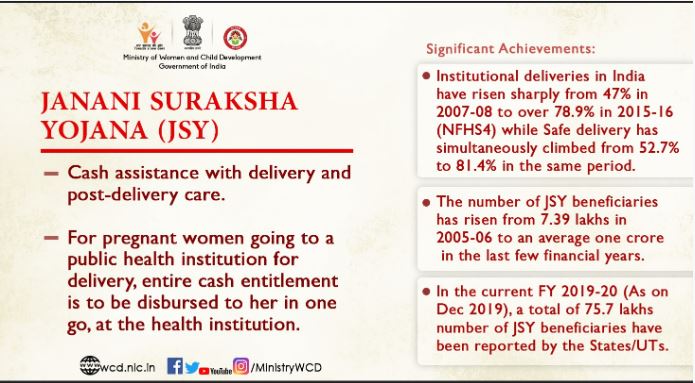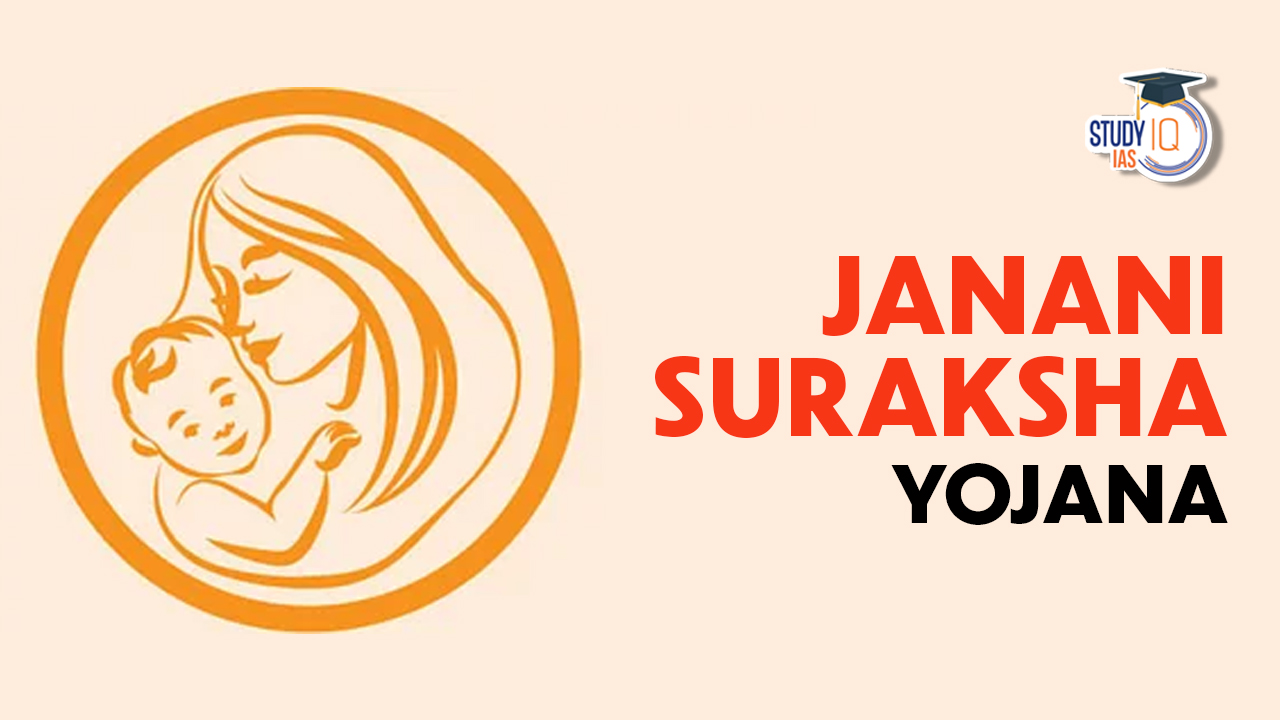Table of Contents
Janani Suraksha Yojana Scheme
The National Health Mission (NHM)’s Janani Suraksha Yojana (JSY), launched in 2005, is a project supported by the federal government. The programme encourages institutional birth among expectant women from disadvantaged backgrounds in an effort to reduce maternal and neonatal deaths. With a focus on underperforming states, the JSY system amended the National Maternity Benefit system and has been implemented in all States and Union territories of the nation. In this article, you will get all about Janani Suraksha Yojana Scheme in detail.
Janani Suraksha Yojana Overview
In order to implement the Janani Suraksha Yojana, the National Maternity Benefit Scheme (NMBS) was altered. The National Social Assistance Programme (NSAP) included the NMBS as one of its components, and it went into operation in August 1995. In the fiscal year 2001–2002, the programme was moved from the Ministry of Rural Development to the Department of Health & Family Welfare. The overview of Janani Suraksha Yojana is mentioned below:
|
Janani Suraksha Yojana Scheme Overview |
|
| Particulars | Details |
| Constitutional Backing | Article 42 – Responsibility of State to ensure the human condition of work and Maternity Relief |
| Name of the Scheme | Janani Suraksha Yojana |
| Launched in | 2005 by modifying National Maternity Benefit Scheme (NMBS) |
| Launch By | GoI under the National Health Mission |
| SDG Goal 3.1 | To reduce the global Maternal Mortality Ratio (MMR) to less than 70 maternal deaths per 100,000 live births by 2030. |
| Under Ministry | Ministry of Rural Development to the Department of Health & Family Welfare. |
| Component | National Social Assistance Programme (NSAP) |
| Beneficiaries | Pregnant Women and New Born Children of families from BPL/SC/ST |
| Objective | Promotes institutional delivery and reduces Maternal Mortality and Newborn Mortality. |
Features of Janani Suraksha Yojana
The Features of the Janani Suraksha Yojana Scheme has been mentioned below:
- The medical facilities offered by the Janani Suraksha Yojana are accessible throughout India. Low Performing States (LPSs) and High Performing States (HPSs) are the two categories into which states are categorised. This classification is based on the institutional delivery rate.
- When implementing the JSY programme, the state’s development in the health sector is taken into consideration. The 10 states with the worst performance levels are Uttar Pradesh, Uttarakhand, Bihar, Jharkhand, Madhya Pradesh, Chhattisgarh, Assam, Rajasthan, Odisha, and Jammu & Kashmir. state performance leaders.
- The medical personnel at the sub-centre, Anganwadi, or primary health centres must register the program’s beneficiaries.
Check out the linked article on the National Digital Health Mission Here!
Objective of Janani Suraksha Yojana
The following goals of the Janani Suraksha Yojana, which the Indian government introduced as part of the National Health Mission, are:
- Encourage expectant moms to give birth in a hospital, especially those from low-income families—such as those from Scheduled Castes, Scheduled Tribes, and BPL families—and those who are low on the socioeconomic scale.
- By making institutional deliveries affordable and accessible to India’s underprivileged pregnant mothers, this programme seeks to reduce maternal and infant mortality.
Check out the linked article on the Mid-May Meal Here!
Eligibility for Janani Suraksha Yojana
The benefits of the Janani Suraksha Yojana Scheme are offered regardless of the expecting mother’s age, the number of prior births, or whether the medical facility is a government- or accredited privately-run one.
|
Eligibility for Cash Assistance under JSY Scheme |
|
| Category of States | Eligibility |
| Low Performing States (LPS) | Pregnant women give birth in a government health facility, such as a state or district hospital’s common ward, first referral unit, primary care clinic, or community health centre. |
| High Performing States (HPS) | Pregnant women from BPL, SC, or ST groups who give birth in SC, PHC, CHC, or general wards of district and state hospitals. |
| Low Performing and the High Performing States (LPS & HPS) | Births at accredited private healthcare institutions by pregnant members of BPL, SC, or ST groups. |
Check out the linked article on the Pradhan Mantri Matru Vandana Yojna Here!
Benefits of Janani Suraksha Yojana
The benefits of Janani Suraksha Yojana have been mentioned below:
- Under the JSY programme, expectant mothers can benefit from three prenatal checkups and institutional delivery. Payment of improved benefits and monetary assistance is related to institutional delivery.
- Those who comply with ASHA regulations are also rewarded. Numerous “Dai,” or traditional birth attendants, are trained under the programme. These workers are then included in the care delivery systems.
- For C-section deliveries, professional assistance is provided. In the absence of such government-employed medical specialists, the government offers financial assistance of up to $1,500 per pregnant mother to hire a private expert to perform the Caesarean delivery in a healthcare facility.
- If a tubectomy or laparoscopic treatment is recommended, the beneficiary is reimbursed in accordance with the family welfare programme.

Janani Suraksha Yojana UPSC
Every year, issues associated with the death of women due to pregnancy-related complications are about 56,000 in Indian. Similar to this, every year more than 13 lakh infants pass away within the first year of their lives, with almost 2/3 of these deaths occurring in the first four weeks. Out of these, over 75% of the deaths occur within a week of delivery, with the majority of them taking place in the first two days.
The National Health Mission (NHM)’s Reproductive and Child Health Programme is being implemented to encourage institutional deliveries so that women and newborns can be saved from pregnancy-related deaths and the rate of maternal and infant mortality can be decreased.


 Plastic Parks Scheme, Objective and Fina...
Plastic Parks Scheme, Objective and Fina...
 NCERT Books for UPSC Preparation, Check ...
NCERT Books for UPSC Preparation, Check ...
 UPSC Syllabus 2025, Check UPSC CSE Sylla...
UPSC Syllabus 2025, Check UPSC CSE Sylla...





















